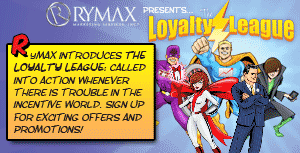Maybe the Traditional Approach to Engagement is All Wrong
Judy McLeish
Employee Engagement has now moved beyond the buzz into the Executive Suite. Employee Engagement is an employee’s psychological and emotional connection with their job, which influences both their loyalty and performance. The definition seems logical enough. So how hard can it be to foster an environment where employees want “to stay; say positive things; and use their discretionary effort to benefit a company”?
It appears to be much harder than any of us thought. Did you know that companies haven’t been able to radically move the needle on engagement since it came into vogue in the late 1990s? Depending on the source, nearly 40% to 70% of employees continue to be classified as neutral, middle-of-the-road or agnostic. What makes these numbers especially discouraging is that over the past decade companies have been trying to foster the employee experience through a variety of methods, including empowerment, teamwork, recognition programs, people development, performance management and new leadership styles.
So after all of the efforts associated with improving the employee experience and fostering engagement, why are we reporting levels of engagement that are well below expectations? Why after so much effort and attention are 19% of employees still actively disengaged?
It was this reality that caused me to question the effectiveness of engagement efforts. Maybe the focus on engaging the entire employee population, with generic programs, isn’t the way to approach the engagement issue. Maybe this traditional, “scatter gun” approach to engagement is the reason why companies haven’t achieved their desired results.
Moving the Needle
I believe that this traditional approach on solving for the “whole” has caused companies to brush over those that have the greatest impact on engagement: themselves – in other words, senior leaders and managers. After all, it’s the leader who has to drive engagement, the leader who has to understand how to engage his/her staff, and the leader who has to show progress and motivate change. It’s the engagement of these leaders and managers that companies rely on to move the needle. Yet, according to Development Dimensions International, only 25% of senior leaders and 17% of frontline leaders are highly engaged.
No wonder companies are having a difficult time making progress.
To reap the full benefits of engagement, companies must first engage those that lead the effort. The old adage holds true: “one bad apple can ruin the bunch.” If you have one leader who is actively disengaged, then this leader (according to Gallup) is three times more likely to have disengaged employees working for them. So if this traditional approach of creating company-wide engagement initiatives isn’t delivering the expected results, what should a company do differently?
It Starts at the Top
Here are some tips to help you move the engagement needle:
- Stop the vanilla, “one-size fits all” engagement strategies aimed at the entire workforce. If your company is in the process of rolling out an engagement strategy aimed at generically appealing to your employee population, stop what you’re doing! I believe you’re wasting both your time and your money. Generic programs aimed at meeting the needs of your workforce won’t move you closer to the engagement levels you require or desire. Engagement strategies must be tailored to engage the individuals within your richly textured employee base. Remember, as with your customers, what will engage and retain one segment of your employee population may not appeal to or engage another segment.
- Start by engaging your senior leadership team. We have heard it all before: “It’s not the senior leaders who engage employees it’s the frontline managers.” Wrong…it’s every leader at every level of the organization, and it starts in the Executive Suite. Unless all executives believe in and want to foster engagement, there will be no engagement.
- Communicate survey results. Trust and transparency are critical in building an engaged workforce. Communicate the results of engagement surveys, outline the importance of having engaged leaders and managers, and highlight the steps you’ll be taking to engage your “top” team members.
- Design an approach to engage your entire senior leadership team, as well as your frontline managers. In order to create leaders who are both engaged themselves and who are able to foster engagement, you’ll need to create an approach that provides them the training and tools to drive engagement. Remember, engagement is a journey – it won’t happen overnight, so ensure that the approach has the appropriate milestones to show progress against the plan.
- Sometimes change needs to be brutal. Unfortunately, change is never easy. Some of your leaders may not be able or willing to make the changes necessary or commit to your engagement philosophy. While patience is always a virtue, you also must ensure that there’s a process to effectively deal with those who remain disengaged, in spite of your best efforts.
Individualize It
As you continue down the path towards a workforce of highly engaged employees, remember that the traditional approach to engagement hasn’t reaped the expected or desired rewards. At this time, it might be appropriate to follow the sage advice of Warren Buffet: “As a group, lemmings have a rotten image, but no individual lemming has ever received bad press.”
Judy McLeish is the Founder and President of McDaniel Partners, a consulting services company focused on helping clients build unique customer experiences through fostering employee engagement. For more information, go to www.mcdanielpartners.com or read her blog, “The Employee Factor,” at www.employeefactor.com.
Subscription Center
Subscribe to Engagement Strategies Magazine
Update Your Subscriptions



.jpg)


Comments
Show: Newest | Oldest
Post a Comment